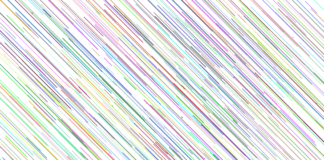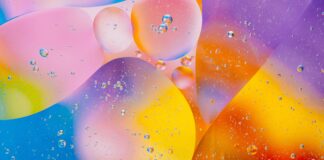Zero-shot learning (ZSL) is a machine learning paradigm that addresses the challenge of recognizing and classifying objects or concepts for which no labeled training data is available. Unlike traditional supervised learning methods, where models are trained on labeled data for each class, ZSL enables machines to generalize to unseen classes by leveraging semantic relationships and attributes shared between known and unknown classes. In this comprehensive guide, we’ll delve into the key concepts, techniques, applications, and challenges of zero-shot learning.
1. Concept of Zero-Shot Learning:
Zero-shot learning refers to the task of recognizing or classifying objects or concepts without any prior labeled training data for those classes. Instead of relying solely on labeled examples, zero-shot learning methods leverage auxiliary information, such as semantic attributes, textual descriptions, or class relationships, to generalize to unseen classes at inference time. This enables machines to recognize new classes not encountered during training, making zero-shot learning particularly useful for handling novel or rare categories.
2. Semantic Embeddings and Attribute-based Representation:
At the heart of zero-shot learning is the notion of semantic embeddings, which represent objects or classes in a continuous semantic space based on their attributes or features. Attributes are high-level semantic characteristics or properties that describe objects or concepts, such as color, shape, or behavior. By learning attribute-based representations, zero-shot learning models can effectively capture the underlying semantic structure of the data and generalize to unseen classes using semantic similarities.
3. Transfer Learning and Knowledge Transfer:
Zero-shot learning often relies on transfer learning techniques to transfer knowledge from seen classes to unseen classes. Transfer learning involves pre-training a model on a related task or dataset with labeled data and fine-tuning it on the zero-shot learning task with limited or no labeled data. By leveraging knowledge learned from seen classes, transfer learning enables zero-shot learning models to generalize to unseen classes more effectively, improving performance and scalability.
4. Attribute Prediction and Class-Attribute Association:
In zero-shot learning, attribute prediction plays a crucial role in linking semantic attributes to visual features and establishing associations between attributes and classes. Attribute prediction models learn to predict the presence or absence of semantic attributes for each class, enabling zero-shot learning models to reason about the presence of attributes in unseen classes and make accurate predictions based on attribute similarities. This class-attribute association facilitates zero-shot recognition and classification tasks.
5. Generative Models and Latent Space Embeddings:
Generative models, such as generative adversarial networks (GANs) and variational autoencoders (VAEs), have been successfully applied to zero-shot learning tasks by learning latent space embeddings that capture the underlying structure of the data. These latent space embeddings encode semantic information about objects or classes, enabling zero-shot learning models to generate realistic representations of unseen classes and perform recognition and classification tasks in the absence of labeled data.
6. Applications of Zero-Shot Learning:
Zero-shot learning has a wide range of applications across various domains, including computer vision, natural language processing, and multimedia analysis. In computer vision, zero-shot learning is used for image classification, object detection, and scene understanding tasks where novel or unseen classes may arise. In natural language processing, zero-shot learning enables text classification, sentiment analysis, and language understanding tasks with unseen categories or topics. Additionally, zero-shot learning is applied in multimedia analysis for audio-visual content understanding and recommendation systems.
7. Challenges and Limitations of Zero-Shot Learning:
Despite its promising capabilities, zero-shot learning faces several challenges and limitations that hinder its widespread adoption and effectiveness. One challenge is the reliance on accurate attribute annotations, which may be subjective, incomplete, or noisy, leading to errors in attribute-based representations. Another challenge is the semantic gap between visual features and semantic attributes, which may limit the generalization performance of zero-shot learning models. Additionally, zero-shot learning methods may struggle with fine-grained or highly diverse classes that lack sufficient semantic relationships or attributes for effective generalization.
8. Advances in Zero-Shot Learning Techniques:
Researchers continue to explore novel techniques and methodologies to overcome the challenges of zero-shot learning and improve its performance and scalability. Recent advances include the development of deep learning architectures, such as graph neural networks, attention mechanisms, and meta-learning approaches, which enhance the modeling of semantic relationships and attribute associations. Additionally, researchers are investigating self-supervised learning and unsupervised representation learning techniques to learn more robust and discriminative feature representations for zero-shot learning tasks.
9. Evaluation Metrics and Benchmark Datasets:
To assess the performance of zero-shot learning methods, researchers use various evaluation metrics and benchmark datasets that measure model accuracy, generalization, and robustness. Common evaluation metrics include accuracy, precision, recall, and F1-score, which quantify the model’s ability to correctly classify unseen classes. Benchmark datasets, such as AwA, CUB-200, SUN, and ImageNet, provide standardized benchmarks for zero-shot learning research and enable fair comparisons between different methods and algorithms.
10. Future Directions and Emerging Trends:
Looking ahead, zero-shot learning is expected to continue evolving and expanding into new application domains and research areas. Future directions include the development of more robust and interpretable zero-shot learning models, the exploration of multimodal and cross-modal zero-shot learning techniques, and the integration of domain adaptation and few-shot learning methods to enhance zero-shot learning performance in real-world scenarios. Additionally, researchers are investigating the use of reinforcement learning and active learning strategies to improve data efficiency and sample selection in zero-shot learning tasks.
11. Interpretability and Explainability:
In recent years, there has been a growing emphasis on the interpretability and explainability of machine learning models, including zero-shot learning algorithms. Researchers are exploring techniques to make zero-shot learning models more interpretable by providing insights into how decisions are made and which features or attributes contribute to classification outcomes. Explainable zero-shot learning can enhance model transparency, trustworthiness, and user acceptance, particularly in critical applications where decision-making processes need to be understood and justified.
12. Scalability and Efficiency:
Scalability and efficiency are critical considerations in zero-shot learning, especially as datasets grow larger and computational resources become more limited. Researchers are investigating methods to improve the scalability and efficiency of zero-shot learning algorithms, such as scalable training algorithms, distributed computing frameworks, and model compression techniques. By optimizing resource utilization and reducing computational complexity, scalable zero-shot learning methods can handle larger datasets and more complex tasks with minimal computational overhead.
13. Domain Adaptation and Generalization:
Zero-shot learning often faces challenges in domain adaptation and generalization, particularly when there are significant differences between the training and test distributions or when unseen classes exhibit variations in appearance, context, or semantics. Domain adaptation techniques aim to bridge the gap between source and target domains by learning domain-invariant representations or adapting model parameters to new domains. Generalization methods focus on improving the robustness and flexibility of zero-shot learning models to unseen variations and domain shifts, enhancing their performance in real-world scenarios.
14. Ethical Considerations and Bias Mitigation:
As with any machine learning approach, zero-shot learning raises ethical considerations related to bias, fairness, and accountability. Researchers and practitioners are actively addressing these concerns by developing techniques to mitigate biases, ensure fairness in decision-making, and promote ethical use of zero-shot learning models. Strategies for bias mitigation include data preprocessing, algorithmic fairness measures, and diversity-aware training procedures, which aim to reduce bias and promote equitable outcomes in zero-shot learning applications across diverse populations and contexts.
15. Collaborative Learning and Knowledge Sharing:
Collaborative learning and knowledge sharing play a crucial role in advancing zero-shot learning research and applications. Researchers collaborate across disciplines and institutions to exchange ideas, share datasets, and benchmark algorithms, fostering innovation and collective progress in the field. Open-access repositories, collaborative platforms, and shared evaluation protocols enable researchers to collaborate more effectively and accelerate the development of zero-shot learning methods, leading to more robust and reliable solutions for real-world challenges.
16. Real-World Applications and Impact:
Zero-shot learning has a wide range of real-world applications and potential impact across various industries and domains. In healthcare, zero-shot learning can aid in medical image analysis, disease diagnosis, and drug discovery by recognizing rare diseases or identifying novel biomarkers. In finance, zero-shot learning can assist in fraud detection, risk assessment, and portfolio management by detecting unusual patterns or predicting market trends for unseen financial events. Additionally, zero-shot learning has applications in autonomous vehicles, robotics, cybersecurity, and other fields where novel or rare events may occur.
17. Education and Skill Development:
Educational institutions and training programs are increasingly incorporating zero-shot learning concepts and techniques into their curricula to prepare students for careers in machine learning and artificial intelligence. Courses, workshops, and online resources cover topics such as semantic embeddings, transfer learning, and generative models in zero-shot learning, providing students with the knowledge and skills needed to tackle real-world challenges and advance the state-of-the-art in machine learning research.
18. Collaboration with Industry and Government:
Collaboration between academia, industry, and government agencies is essential for advancing zero-shot learning research and translating innovations into practical applications. Industry partnerships provide access to real-world datasets, computational resources, and expertise to validate and deploy zero-shot learning solutions in commercial settings. Government agencies support research initiatives, fund collaborative projects, and establish regulatory frameworks to ensure the responsible and ethical use of zero-shot learning technologies for societal benefit.
Zero-shot learning is a versatile and powerful machine learning paradigm with broad applications and significant potential for impact across various domains and industries. By leveraging semantic embeddings, transfer learning, and generative models, zero-shot learning enables machines to generalize to novel classes and domains, handle data with unseen categories or rare occurrences, and make intelligent decisions in complex and dynamic environments. Despite facing challenges and ethical considerations, zero-shot learning continues to drive innovation, collaboration, and progress in the field of machine learning, paving the way for more intelligent and adaptive systems in the future.
In summary, zero-shot learning is a powerful machine learning paradigm that enables machines to recognize and classify unseen classes without labeled training data. By leveraging semantic embeddings, transfer learning, and generative models, zero-shot learning methods generalize to novel classes and domains, making them valuable tools for handling data with unseen categories or rare occurrences. Despite facing challenges and limitations, zero-shot learning continues to drive innovation and advance the state-of-the-art in machine learning research, with promising applications across various domains and industries.














